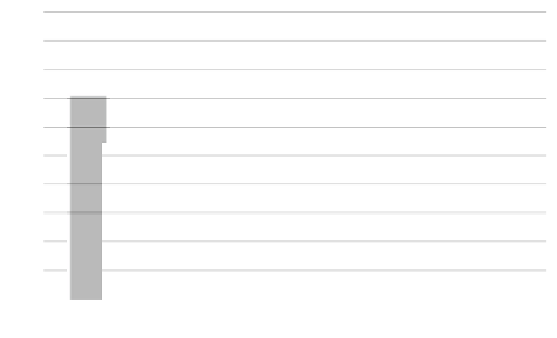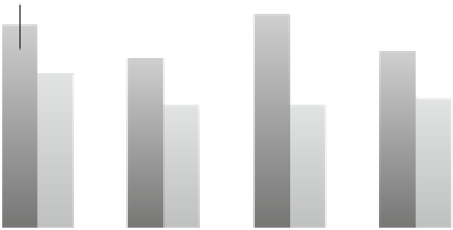Information Technology Reference
In-Depth Information
Fig. 4.
Questionnaire Results for physics and normal interaction modes. Error bars show 95% CI
and H9 were confirmed in the experiment. An interesting result is that users moved
the mouse less in the GION condition, butmademoremouse clicks. This suggests
that participants spent more time fine-tuning the layout. Another unexpected result is
that while GION produced layouts with lower stress and fewer edge crossings than the
normal interaction, those values were worse than for the startinggraph layouts. Using
human interaction to untangle a large graph raises the question of what actually makes
a good layout in this context. In particular, classical metrics like stress or edge crossings
do not take into account the dynamics of the process and the mental map that the user
creates during interaction. Intermediate layouts might not be good with respect to such
metrics, buttheuser's interactive operations to create them can increase the users insight
in the graph structure, and their value may depend on the precedinguntangling process.
Trying to measure such effects is however beyond the scope of this paper.
We deliberately restricted the user interface for the sake of a robust evaluation. For
example, participants were not able to zoom or pan the graph drawing. A more complete
system would also allow users to temporarily disable the physics engine in order to
precisely control a single cluster. Multiple levels of clustering would also improve the
technique, by allowingusers to switch from coarse to fine grained interaction.
7
Implementation Details
Our video-wall consists of six NEC NP510W projectors each with a resolution of
1280x800 arranged in a 3x2 configuration. A camera based technique, as described
by Raskar et al. [15], is used for geometric calibration of the projectors and for pro-
ducing blending masks for smooth transitions between projectors. The computer used
in this work consists of 2x Quad Core Xeon processors, 12GB of RAM, and 2x Nvidia
Geforce GTX 780 GPUs.
The system presented in this paper consists of a custom built application written in
C++ with OpenGL for rendering. The physics simulation was developed using Box2D
1
,






















































